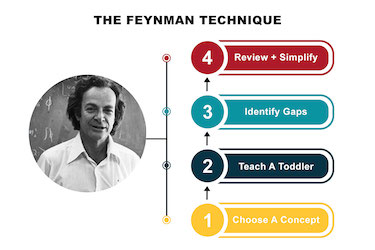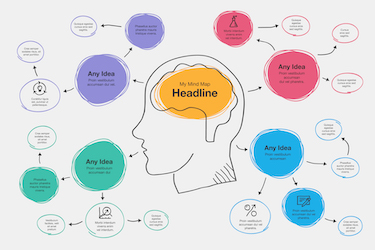Taking notes is an essential part of school or college. Your notes need to ensure that you have most, if not all, of the information that you need for an exam or essay. We know that studying for exams and essays can be stressful enough. Even harder when you can't even read your study notes. To make note-taking easier, there are a few tried and tested study techniques. Keep reading to find out what they are!
The Outline Method:
The outline method is the simplest and easiest method to learn. The idea of this approach is to pick out 4 to 5 key points that are going to be covered in your lesson. Then under those key points, you will write all the subheadings and the information you are going to need. This format makes note-taking easy, right from the start. The outline method will help you to focus on the most important parts of the lesson. This format looks organised and tidy on the page. If you need to turn your notes into quiz questions later, this is the note-taking method for you!
Mind mapping:
Mind mapping is a visual way to take and organise notes. It's great for subjects such as history and philosophy, as these often have overlapping topics. Mind maps are a visual way to see how subjects interlock. To start with, you would write your main topic in the middle of the page and then branch off into subtopics/subheadings. Then underneath those subtopics/subheadings, you would then go into details about them. If you are a visual learner, then this technique is perfect for you. You can colour coordinate and make your page look stunning!
Click here to read more about the Mind Map technique
Flow notes method:
Much like the mind mapping technique, the flow notes method is perfect for visual learners. For this method, you should think of a symbol to describe a word. For example, if you are studying Kings and Queens of England, you could draw a crown symbol next to each King or Queen's name rather than writing out the word 'Queen'. Some people even make up a symbol for each letter and take notes in their code! This method dates back to the Ancient Egyptians who used hieroglyphics to be able to scribe quickly and efficiently. As we have mentioned, this technique is great if you work visually but making up your code might take some time and might be difficult to remember!
A more simplistic version of the flow method is creating a shorthand key for yourself. If you want to write down the words 'Key Performance Indicators' you could shorten this to 'KPI'. Taking notes like this will save you time and allow you to concentrate on what is being taught.
The Sentence Method:
The sentence method is probably the simplest and is the oldest type of transcription. To do this method, all you need to do is listen to what is being said in your lesson and write down everything that is being said. This method is great if you are a quicker writer or typer, or if your lesson is going at a slow pace. If the lesson is moving fast or there is a lot of information to write down, this probably isn't the method you want to use. Save the arm ache and use a different technique!
The Charting Method:
The charting method is another visual way to take notes without taking down irrelevant information. For this method, you will set up a table with the columns being titled after each of the important topics you will be covering in your lesson. Then you could create a number of medium to large boxes to separate all the information you need to note down. Because of the table-like nature of the method, there isn't a lot of room to write down all the information that you need. So, in theory, you should write down the specifics that you need to know, this technique is great if you often find yourself taking down information that is not specifically relevant or if you find your notes get muddled up.
The Cornell Method:
The Cornell method is very similar to the charting method. You will need to split the page into 4 sections. The first section will be your title. This will only need to be about 2 to 3 lines long at the top of the page and is of course optional. Secondly, you will need to create a similar box at the bottom of the page. This one will need to be around 5 to 6 lines high. This will be your summary box. You will be able to briefly summarise all your notes in here. Next, you will create a column on the left-hand side of the page (about 30% of the page wide). In this section, you will be able to jot down the keywords, learning objectives or headings that will be covered in your lesson. Finally, the rest of the page will be your last column. This is for noting down your key thoughts and the main points you will need. In this section you could incorporate the flow method or the sentence method. It is important with this technique to keep your notes short and to the point, so you can spend more time summarising later.
All these methods have been used for many years. They have been proven to work to help effective note-taking. However, studying and note-taking isn't a 'one size fits all' kind of job.
That being said, the basis of taking down notes effectively is usually down to a theory called the '5 R's'
- Record: Being in class and taking down your notes.
- Reduce: Condensing notes to the most relevant information.
- Recite: Explaining your notes and understanding them.
- Reflect: If there are still things you don't understand, find the answers and add those to your notes
- Review: Make sure your notes are relevant and will help you reach your exam/essay goal.
Now, let's look at some other ways you can take effective notes;
Have a positive mindset
First things first, when heading into a class or lecture it is important to get into a positive mindset. Beating yourself up about a lesson before you even get to it is unfair on yourself, and you're setting yourself up to fail. When you put your mind to something you can do it. No matter who you are. A positive mindset is key for passing exams!
Have some sort of structure
If you write random facts all over your page with no structure, it is likely that when you come to use your notes to study, you'll get confused, and they just won't make sense. Try to use a method we have mentioned above or create your own!
Try to write your notes in a language you understand
When you're in class your lecturer/ teacher could use some words, you aren't familiar with. If this happens, you could write this word down (it could be important later) and then write a simplified meaning next to it. If you don't have time to write a simplified meaning, you could star it or colour code it, so you know you need to research this at home.
Go over your notes and simplify them, cut them down, extract only the important information.
After your lesson, it might be a good idea to go over your notes. When you go over them, you could condense them and take out the things you don't really need. Keep doing this until you have flashcards or more concise notes. Flashcards are a great resource for a big test!
Always use your own words
This is probably the most important tip there is. Do not copy other people's work. If you choose to copy notes word for word from a textbook or online, don't be tempted to use this in your final exam or essay. This is called plagiarism and could land you in a lot of trouble. Your work will be disqualified, and you'll probably have to do the whole thing again. If you copy notes from a textbook, make sure that when you revise your notes later on and alter them into your own words.
Repetition
If a teacher or lecturer is telling you a fact over and over again, it is highly likely that that information is really important and could come up in your exam. Write it down, circle it, colour coordinate it, just don't forget it!
It's important to remember that everyone learns in different ways, whatever works for one person, doesn't always work for another. Find a method or make up your own that suits you! The goal of effective note-taking is to make sure you have as much information that you need, in a concise format that can easily be turned into flashcards or something similar. Taking effective notes and rewriting them and saying them out loud will not only help you understand your subjects, but this process will help you memorise and recall all the facts, ready for that big exam.
Read more about the concept of Spaced Repetition, Flashcards and ANKI















